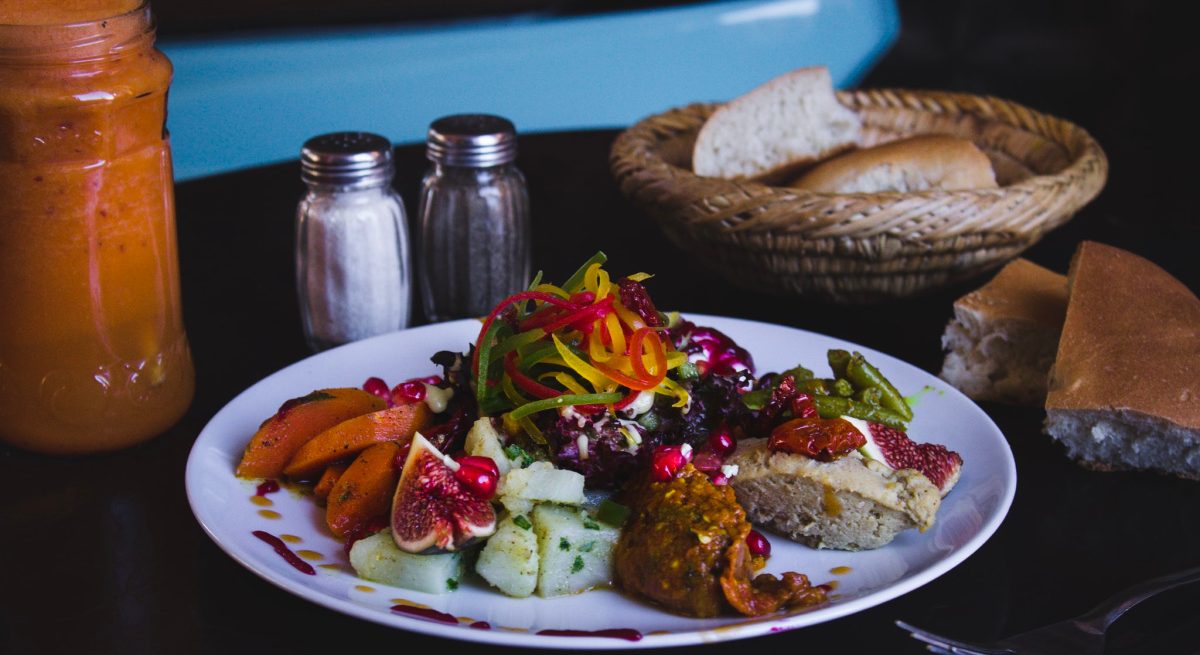Measuring KPIs for Food Safety Success in Holiday Menu Items, Off-Premise Catering, LTOs, and Beyond
5 Min Read By Paula Herald
It's the most wonderful time of the year…and for many restaurant operators, one of the busiest.
The holiday season offers opportunities for catering orders, off-site catering, in-store limited-time offers of holiday favorites, and all of the increased revenue that comes with them. As we approach the new year, many restaurants will revise their menus to introduce new year-round items.
Why Measure Food Safety Performance?
Achieving food safety excellence should be a continual goal. A restaurant is not stagnant. Processes, equipment, menus, and products are always changing. Therefore, a restaurant's food safety goals should evolve along with these changes.
For that reason, it's important for organizations to regularly evaluate their restaurants and processes to determine their most important food safety goals, measure them, and hold employees accountable for achieving those goals.
Establishing Your Key Performance Indicators
To begin measuring food safety performance, an organization first needs to establish its KPIs. KPIs should be set at the c-suite level. This not only demonstrates to the organization that food safety is a top priority, it ensures that the goals being set are achievable and can drive positive, impactful change across the organization.
In addition to an organization's own reporting, unbiased and objective data from locations' health department inspections can provide insights that can help inform KPIs that move the needle. Third-party audit results can work in the same way. Similarly, if an organization has a self-assessment program, you may be able to glean valuable insights from self-assessment scores, as well.
Ask questions such as:
- Are our health department scores improving?
- Are audit scores improving?
- What are our top high-risk issues across the organization?
- Are our high-risk issues decreasing?
- What issues are occurring repeatedly?
- Is the number of locations experiencing repeat fails decreasing?
- Are corrective actions being logged and followed up on?
Anwers can help to inform a set of KPIs. For example, if there is an increase in the number of locations experiencing repeat fails on audits, a measurable KPI to establish may be to reduce the number of locations with repeat fails by 50 percent.
Once a KPI is determined, identifying the measures needed to reach them is the next step. In the example above, a next step may be to identify the top three high-risk issues cited at all locations with repeat fails, identify any common root causes, then set goals and specific timelines to address those underlying causes."
Remember these principles:
- Set measurable and achievable food safety goals.
- Establish a clear and achievable rating/scoring system for food safety goals.
- Determine clear and actionable responses based on the ratings/scores.
- Agree to specific timelines for completion for each corrective action.
- Prioritize the most critical food safety items on your scorecard.
- Establish documented monitoring of critical control points at regular daily intervals.
Socializing KPIs
- To ensure that all staff members understand the importance of achieving established KPIs, it is important that they are socialized – discussed, understood, and continually reinforced – throughout the organization.
- Announce the KPIs. Set up a meeting and invite all staff involved to participate. This helps to ensure support, enthusiasm, and buy-in across the organization.
- Document the KPIs. Written KPI parameters and the definition of success should be accessible by all staff members for easy reference.
- Reinforce the KPIs and the food safety goals that will help achieve them. Leadership should talk about KPIs and food safety goals regularly, as well as demonstrate the correct behaviors at every opportunity. In locations, signs and digital displays can also be useful in keeping goals front and center. Add KPI or food safety goal discussions to every meeting.
- Report on the KPIs regularly. From c-suite down to the location level, regular reports can help drive home the importance of the goals and show progress.
- Celebrate KPI wins. Finding ways to applaud wins or give positive recognition for a job well done is important – it demonstrates that the KPI is important and that achieving them merits its own reward.
Key Measurements to Help You Reach Your KPIs
Each year, Steritech conducts more than 300,000 assessments in restaurants, supermarkets, convenience stores, and other foodservice operations. In the restaurant industry, several food safety and operational issues are consistent issues across restaurants, no matter if they are fine dining, casual dining, fast casual, or quick service restaurants. Measuring success in these areas may help drive KPI success.
Cleanliness of Food Contact Surfaces – In a data analysis of Steritech assessments conducted in the first six months of 2019, nearly 65 percent of fast casual and approximately half of quick service and casual dining restaurants were cited for cleanliness of food contact surfaces. Items to evaluate in this category may include:
- Visual appearance – Do pans, counters, or other food preparation surfaces have visible residue or soil on them? Cleanliness is critical whether food preparation and packaging areas are visible to customers or not, but may have added weight in locations where customers can see the food preparation happening.
- Cleaning logs or checklists – Are logs or checklists being used to record equipment cleaning, such as slicers? These are simple ways to keep track of when and if cleaning is being conducted.
- Staff training – Is equipment being cleaned properly? This begins with training all staff how to properly clean equipment, and what the ramifications could be of equipment that isn't cleaned properly.
- Off-premise catering equipment and containers – Ensuring that all off-premise catering equipment is thoroughly cleaned after each use is critical. Utilize a checklist to ensure each item is cleaned and returned to pre-service condition.
Hot and Cold Holding – In that same data analysis, both cold and hot holding fell into the top 10 issues cited in all restaurant verticals, with cold holding being a more commonly cited concern than hot holding.
- Temperature logs – Temperature logs should be used throughout any restaurant to record temperatures for hot or cold held foods, including anything in cold wells, refrigeration units, coolers, hot holding, hot drawers, chafing dishes, steam tables, etc. Time/Temperature Control for Safety (TCS) foods should be held at 135°F or above, while cold foods should be held at 41°F or below. Any deviations from these temperature ranges should be reported to management so that the root cause can be identified and appropriate action taken to ensure food safety.
- Additional precautions for catered foods – Maintaining temperatures and managing time for catered foods may require additional precautions while holding for pick-up, during transport, and during any catered event. Do cold foods require pre-chilling, special coolers or transport containers, or the addition of ice packs? Using preheated/insulated containers can help to keep hot TCS foods at 135°F. Restaurants that cater off-site events may want to consider purchasing additional thermometers to help staff members take food temperatures and ensure that food is being served at the appropriate temperature.
- Self-serve customer orders – For catered events that may be ordered for self-service by the customer, include directions on food safety handling of the food, including holding temperatures, limiting time out temperature control, reheating, refrigeration of leftovers, and any safety concerns with packaging.
Staff Hygiene – In a 2018 survey of more than 500 regular restaurant diners by Steritech, poor employee hygiene ranked as the number three cleanliness factor that bothered them the most. Food safety goals around hygiene standards could include items such as:
- Handwashing – Are proper handwashing practices being used by all employees? Are handwashing sinks easily accessible and well-stocked?
- Hair and beard restraints – Hair and beard restraints should be used consistent with your state or local health department guidelines.
- Gloves – Single-use gloves should be used to protect ready-to-eat food. Employees should wash their hands before donning a new pair of gloves and change their gloves whenever they would wash their hands.
With the new year just around the corner, remember that KPIs and food safety goals shouldn't be static. When was the last time you took a hard look at your food safety program? Is it due for a refresh in 2020? If so, now is a great time to get started.


